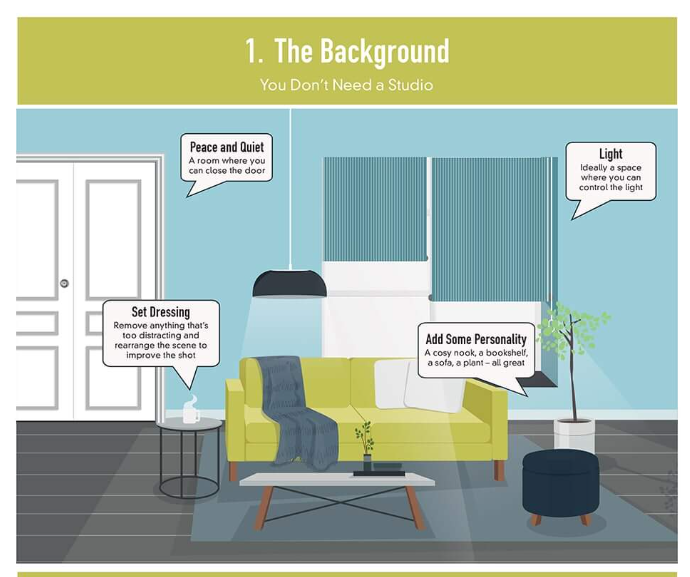
A Complete Guide to Repurposing Blog Content
Is your time limited and your budget more so? Repurposing your blog content is a great way to maximize its value and reach a wider audience. And it needn’t cost you much in either time or money.
Sounds great. But how do you do that? And what do we mean by repurposing in content terms? Read on for our guide to the what, why, and how of content repurposing.
What Is Content Repurposing?
You’re probably familiar with the concept of reduce, reuse, recycle in environmental terms: promoting a more sustainable way of living. As well as benefiting the planet, it saves us money when we make better use of the consumer goods we already have.
Now substitute business for planet and content for consumer goods in that last sentence, and you get the idea of content repurposing.
What Do We Mean by Content?
Content can take many forms:
- Blog posts
- Newsletters
- Email campaigns
- Social media posts
- Infographics
- Ebooks
- Videos
In this guide, we’ll focus on repurposing blog content, but any form of content can be repurposed. And hang on to that list: it’s key to repurposing.
What Do We Mean by Repurposing?
Although it involves reusing what you’ve already created, it’s not as simple as reposting the same content on the same platform at a different time. Nor is it posting the same content on a different platform – that’s still valid as cross-posting but isn’t quite as creative.
Reposting and cross-posting both have their place in your marketing strategy, but your audience may get bored of the repetition involved and you may miss out on some of the benefits we’ve listed below.
Repurposing involves recognizing the different requirements of the various forms of content and adapting your existing content accordingly. The essence of the content stays intact, but in a way that fits different sections of your audience, and ensures it remains fresh.
What Are the Benefits of Repurposing Content?
Whether you’re a freelancer or part of a marketing team, the obvious benefit of repurposing content is the time and money it will save you. Having dedicated the time to research and write a blog post, it will only take a few tweaks to reuse it in different ways or to update it to keep it relevant.
And there are other benefits.
Repurposing your content in different formats across different platforms will naturally increase your online presence. A broader presence will help you reach potential new clients who seek out and digest information differently (more on this later).
The more content you post and the broader its reach, the greater the awareness of your brand, which will help your audience remember, trust, and support you.
Repurposing content on a particular topic can help to establish your expertise, authority, experience, and trustworthiness (E-E-A-T), which is important for giving your search engine optimization (SEO) a boost. The better your SEO, the easier it will be for your audience to find you.
Knowing about the different ways in which content can be repurposed will also help you when creating new content. Having a stack of shareable content will ease the task of repurposing it.
How to Repurpose Blog Content
Remember that list of content types from earlier? That’s what you need to have in mind when it comes to repurposing your blog content.
To get the most value from the posts you’ve written, you could turn them, individually or as a series, into any form from that list. You don’t need to repurpose your content across every type – a targeted approach may be a better use of your time.
Consider where your audience might be and where your skills lie. For example, if your target demographic spends a lot of time on social media, you may want to consider turning your blog posts into short, snappy posts with engaging graphics (more on that coming up!).
Infographics
Some of us work better with visuals than text. Try condensing the key points of your blog post into visually appealing infographics.
You could do this using tools such as Canva or Adobe Express – both have free options.
Here’s an example of an infographic from Spiel, created to explain how to shoot a video yourself. We’ll mention this again later on down this list…

Podcast Episodes
Many people either learn by hearing information or can’t work with text or visual media. And some of us like to have an audio version that we can listen to while getting on with unavoidable chores. By turning your blog post into a podcast script, you can effectively reach this part of your audience.
Several podcast tools are available, some of them free, thanks to the growing popularity of this format. Have a look at Spotify for Podcasters and YouTube Creators, for example.
For some podcasting inspiration, check out our review of podcasts about language.
Video Tutorials
If your blog content is aimed at providing a how-to guide, then your audience may benefit from watching a demonstration. You may find it easier to show, rather than tell, your audience what you mean. Turn your blog post into a script to avoid getting tongue-tied. And if you’re camera-shy or don’t like the sound of your voice (who does?), you can hand the script over to your presenter.
If your tutorial is screen-based, you can make use of free tools to record a PowerPoint presentation or record your own screen. Otherwise, you can shoot your video at home or in the office with equipment you may already own (remember that infographic?).
Once you’ve recorded your tutorial, you can make use of free video hosting platforms, such as YouTube and Vimeo, to make it available to your audience.
To illustrate what we mean, here is Proofed’s blog post about The Three Types of Irony. And here’s the same blog post repurposed as a video tutorial.
Subscriber Newsletters
The main function of a newsletter is to provide information, which makes it the perfect partner for your blog content. Consider, therefore, repurposing your blog content as a regular newsletter.
You can use the same tools to create your newsletter as you used for designing your infographics – reducing your outlay by reusing your tools – and use your blog post’s CTA (call to action) to invite readers to subscribe to your mailing list.
Try utilizing a scheduling tool to ensure your newsletter goes out regularly, regardless of your work commitments. Your existing email provider (e.g., Gmail) may allow you to schedule individual emails. Or you could use one of several dedicated email newsletter platforms, such as Mailchimp and MailerLite, which include free options.
When using your content in a newsletter, you’ll need to ensure that it’s up to date (otherwise, it won’t satisfy the news element of a newsletter). Include extended versions of the blog posts and add details of forthcoming events in your business or exclusive discount codes. To engage with your audience, use the newsletter to invite suggestions of further topics you could cover.
Email Campaigns
While a newsletter provides regular information to your subscribers, an email campaign is something you can use to highlight a particular event in your business.
If, for example, you have published a book (hang on to that thought), you might want to launch an email campaign in the run-up to its publication date. And for that campaign, you could use snippets of your content in each of your emails – like a series of teaser trailers.
And, in the spirit of repurposing, you can use the same tools to create and distribute your email campaigns as you used for your subscriber newsletters.
Ebooks
If you’ve written related blog posts on a particular topic, you could compile them into an ebook. This would provide a valuable resource for your audience, and you can use it either as an extra marketing tool – a bonus offered free to those subscribing to your email list, for example – or as a source of revenue if you choose to sell it.
And if you do decide to publish and sell the book, you could launch it with an email campaign. (See? It was worth hanging on to that information from above.)
Self-publishing has become much easier, with free options or trials available through platforms such as Amazon KDP, PublishDrive, Apple Books and Google Play Books.
Social Media Posts
Short and snappy, social media posts are perfect for extracting key information from your content. You could do this to reflect seasons, news headlines, holidays, and trends.
Try including relevant images – maybe use your infographic or clips from your video – to capture your audience’s attention.
If you’ve invited comments from your audience and received some great feedback, you can – with their permission – lead with a quote from those.
Social media platforms abound – Instagram, TikTok, etc. – and you probably already have accounts with a number of them. You can use the scheduling tools we covered earlier to maintain a regular presence on social media without having to be regularly present.
Becoming A Freelance Writer
By repurposing your blog content in different formats and channels, you can extend its lifespan, reach new audiences, and reinforce your brand message effectively.
If you want to brush up on your writing skills to make the best use of this marketing tool, our Becoming A Freelance Writer course has a full module on writing professional blog posts and articles. You can even try a couple of lessons for free.





Your email address will not be published.